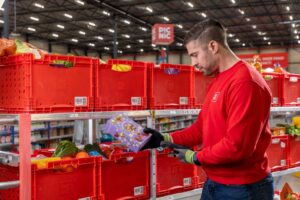Scientists say that crop domestication has moved slowly since agriculture began about 10,000 years ago, and a recent study says that the there’s no one to blame for the creeping-growth but ourselves.
“How did humans get food?” asked researcher Lewis Lukens. “Without domestication — without food — it’s hard for populations to settle down. Domestication was the key for all subsequent human civilization.”
Appearing in the current issue of Proceedings of the National Academy of Sciences, the study conducted at the University of Guelph shows that domesticated plant traits are actually just as successfully, if not more, passed down through plants than ancestral. That means that when a group of people domesticates a plant to have a certain quality– say domesticating stronger corn kernels that allow them to stay on the cob, rather than fall– those plants and traits should be pretty easy to share.
But, that’s just not been the case. Scientists say that plant domestication is much slower than they might expect. And after the findings, scientists were left to speculate and try to understand the domestication holdup.
“We conclude that the slow adaptation of domesticated plants by humans was likely due to historical factors that limited technological progress,” Lukens said. What does that actually mean? According to the U. of Guelph release, the study suggests “cultural and historical factors — anything from war and famine to lack of communication among separated populations — accounted for the creeping rate of domestication.”
Scientists Lukens also worked with Guelph PhD student, Ann Meyer, and collaborated on the study with biologists at Oklahoma State University and Washington State University. The scientists hope not only to bring some light to the past, but also to the possibilities of domestication for the future.
“This work is largely historical,” Lukens said, “but there are increasing demands for food production, and understanding the genetic basis of past plant improvement should help future efforts.”
FEATURED PHOTO: Ingrid Taylar/Flickr




